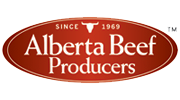Prevalence of Clostridium difficile in Beef Cattle
| Project Code: | 0008-014 |
| Completed: | September 2009 |
Project Title:
Evaluation of the Prevalence and Characteristics of Clostridium difficile in Beef Cattle
Researchers:
Dr. Scott Weese jsweese@ovc.uoguelph.ca
Scott Weese, DVM (University of Guelph), Calvin Booker, DVM (Feedlot Health Management Services), Sheryl Gow PhD, DVM (Public Health Agency of Canada and Western College of Veterinary Medicine), Richard Reid-Smith, DVM (Public Health Agency of Canada and Ontario Veterinary College)
Clostridium difficile is a bacterium that can cause diarrhea and other health complications in in people, especially if they have recently taken a broad spectrum antibiotic. Broad spectrum antibiotics get rid of all the other bacteria normally found in the gastrointestinal tract, leaving no competition to hinder the proliferation of C. difficile. Severity of the illness can range from asymptomatic to life threatening, and outbreaks are most common in hospitals. Recently, there has been increased recognition of C. difficile infection outside of hospitals and in people without the typical risk factors for infection. The bacterium can be found in various animals, including dairy cattle, as well as in retail meat. Therefore, there has been concern that food and animal contact might be sources of C. difficile infections in humans. An added concern about foodborne contamination is that cooking at regular temperatures does not destroy the bacterium. It is unknown how common C. difficile is in beef cattle, whether it causes cattle to become sick, or whether the same strains of C. difficile are present in beef cattle and humans.
A better understanding of the amount and types of C. difficile present in feedlot cattle populations will determine whether changes in management or other interventions are required to reduce the risk of human C. difficile infection from retail meat.
Objectives:${pageBreak}
The objectives of this study were threefold:
- To determine whether C. difficile is present in healthy cattle at arrival and prior to departure from the feedlot.
- To identify which strains of C. difficile are present in beef cattle.
- To determine if the same strains of C. difficile are present in feedlot cattle, retail meat and infected people.
Fecal samples were obtained from 330 animals in four different Alberta feedlots upon arrival and while on feed in the feedlot. These samples were analyzed for the presence of C. difficile, as well as strain type, and compared to those strains found in retail meat and human infections.
What They Learned:Even in feedlots under the same management, the incidence of C. difficile varied upon arrival and departure from the feedlot. Average C. difficile shedding was low at both time points (3.3% and 5.5%, respectively). At one feedlot, the incidence of C. difficile did increase over the feeding period, but this did not occur at the other feedlots. There was no influence of in-feed or injectable antibiotic treatment on C. difficile shedding. The rates of C. difficile shedding reported in this study are much lower than those reported in dairy and veal calves, indicating that animal age may be a factor, and that C. difficile is less common in feedlot production systems. This is reinforced by a study from the US that found C. difficile shedding rates decreased to 1.2% by the end of the feeding period. One strain (ribotype 078) accounted for all C. difficile isolates identified in this research project. This is a common strain in cattle and other food animals; however the frequency of this particular strain in this trial was much higher than previously reported in both live cattle and retail meat.
The incidence of C. difficile in retail meat appears to be higher than its prevalence in live feeder cattle. There are few possible explanations; starting with the possibility that C. difficile is present at higher rates in cattle elsewhere in the country. It is also possible that C. difficile may be getting picked up during processing, either from humans working with the meat or other sources of contamination.
What It Means:This study has shown that while C. difficile is present in feedlot cattle, it is uncommon, and standard feedlot practices appear to discourage high rates of C. difficile shedding. These results also demonstrate the need to use appropriate populations when studying the rates of C. difficile in feedlot cattle and retail beef, as extrapolating from other populations will lead to the wrong conclusions. Although the dominant strain of C. difficile found in this study, ribotype 078, is of increasing concern to the human population, these results are contrary to other recent studies, where other strains were more common in both live cattle and retail meat.
As the presence of C. difficile appears higher in retail meat than live cattle, more research is needed to further determine sources of C. difficile contamination, and there may be a need to focus on reducing contamination from human or environmental sources during processing. Other research has isolated C. difficile from vegetables, water, household environments, pets, and healthy humans, which means that exposure to C. difficile happens on a regular basis without causing illness. Although there are no documented cases of human C. difficile infection acquired through the consumption of contaminated meat, research is currently underway to determine if any potential risk does exist.








